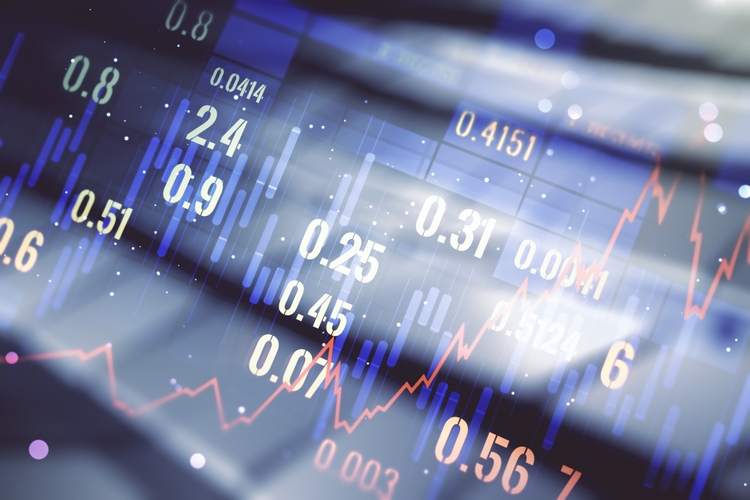Igor Kutyaev
By David Baskin
The Summer Of Our Discontent
From June 8th to June 16th, the S&P 500, the index of the most valuable traded companies in the United States, dropped 520 points, or 12.5%. About $4 trillion of market capitalization was vapourized in just over a week. That is, by any measure, a staggering amount of money. It is equal to about $12,000 for every person in the United States, or about $560 for every human on earth. The proximate cause was the increase in interest rates in all the developed countries. Central bankers around the world acted in concert to combat inflation by quickly raising rates. In the last six months, the yield on 2-year US government bonds has risen almost exactly 2.5%, from 0.65% to 3.13%. Rates to borrow money have risen equally quickly. The interest rate for a standard mortgage in the US has risen from 3.1% to 5.3% in the same period.
Higher interest rates are toxic for both stocks and bonds. As we have discussed in earlier newsletters, higher rates make existing bonds less valuable, and the longer the time to maturity, the more the value drops. The Canadian bond index is down 13.7% year to date, a horrible performance for an asset that most investors view as a safe haven. It is the worst performance for the bond market in at least the last 70 years.
For stocks, higher interest rates hurt prices in at least four ways:
- Companies are valued based on the discounted value of their expected future earnings. The discount rate used reflects the time value of money. When interest rates rise, the discount rate rises and future earnings become less valuable. The easy way to see this is by looking at the familiar price:earnings ratio. When rates are low, the price:earnings ratio might average 20 times earnings; as rates rise, that ratio might drop to 16 times earnings. This so-called multiple contraction probably explains much of the drop in the stock market.
- Higher interest rates will reduce earnings for some companies, particularly those which are carrying a lot of debt. Lower earnings usually result in lower share prices.
- Higher interest rates make bonds more attractive. Investors who turned up their noses at five-year bonds yielding 2% might now be thinking of selling stocks to buy bonds yielding 4.5% or 5%. As money moves out of stocks into bonds, stock prices would tend to fall.
- As central banks raise interest rates, investors fear that the economy could be tipped into recession. Higher interest rates are designed to reduce demand and encourage saving; but if rates are too high, many consumers will postpone or cancel discretionary expenditures. A sudden drop in consumer spending could cause a recession. Typically, company earnings drop during a recession, again making stocks less valuable. Some of the current market drop is without doubt caused by investors selling due to fear of a future recession.
The question on most investors’ minds is obvious. Is the drop we have seen in the markets too little – will the markets continue to fall, as some commentators have warned? Is the market drop too much? Often markets overshoot and go too far in one direction or another. Is that the case this time, and can we expect a rebound?
History teaches us that bear markets, such as this one, can last for a while, but eventually, give way to recoveries. How long that takes is highly variable. During the aftermath of the financial crisis of 2008-2009, it took about 30 months for most of our clients to see their portfolio values rise to the previous high-water mark set in August 2008. On the other hand, the recovery from the COVID bear market was sudden. The S&P 500 fell 35.4% in only six weeks in the spring of 2020 but then went on to surpass its previous all-time high by August of that year. The recovery took only four months.
Just as investors become overly optimistic in boom times, they become too gloomy when markets are falling. We don’t know when the bottom will be reached; it is entirely possible that we already saw it in June. We don’t know when stocks will reach and surpass their previous highs. We only know that, in time, they will. We don’t know which stocks and which sectors will lead the recovery, but we do know that the kind of high-quality companies which are included in our portfolios are usually the quickest to recover when the markets turn around.
Wise investors understand economics and numbers can only go so far in explaining what is happening from day to day in the markets. Fear and greed, two powerful human emotions, play a very large part in the short term. Greed drives prices up, and fear sends them down. This is why so many investors buy at the top and sell at the bottom, and why they don’t do as well as they should. We try as hard as we can to be dispassionate and objective about the value of the companies in our portfolios. This is the most certain path to success over time.
Editor’s Note: The summary bullets for this article were chosen by Seeking Alpha editors.


Be the first to comment